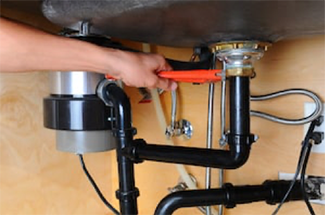Home Water Audits
 22 October 2019
22 October 2019 

Consider Low Flow Plumbing
Water costs in the home continue to rise annually. A home water audit can show you ways to minimize water consumption and lower your monthly water bill.
The solution is a system of low flow plumbing. This is a way to reduce overall water usage without decreasing the water pressure in your home. Most homeowners enjoy a substantial cost reduction in their monthly water bill. A low flow plumbing system typically pays for itself in the first year!

The Home Water Audit
The first step is to conduct a home water audit in order to get a greater understanding of the current usage and any potential areas for improvement. This includes locating and observing the readings on your home water meter. This meter is usually located in a pit near the front curb or on an exterior wall.
The US Geological Survey reports that on average, each person uses about 80-100 gallons of water per day, for indoor home uses. The largest use of household water is to flush the toilet, and after that, to take showers and baths. That is why, in these days of water conservation, we are starting to see toilets and showers that use less water than before.
Less than 50 gallons a day is an excellent water usage average. Any consumption greater than 80 gallons a day allows for ample room for improvement with a low flow plumbing system.
To most accurately gauge your water consumption, it is best practice to record multiple water meter readings, and then take the average in order to reduce the effect of outliers.
Checking Appliances and Pipes
Once you have gathered a greater understanding of your meter, it's time to continue the home water audit with a check of plumbing fixtures and appliances around the home. Look for obvious signs of leaking around the flooring. This may not seem like a huge deal, but over time this adds up and tacks on to the overall water bill. A clear indicator for toilets is regularly hearing sounds, even when it's not in use, or that the flapper is leaking liquid into the bowl. If all plumbing fixtures and appliances look good but you still have high water consumption, your home could have a leaky pipe. Turn off all water to your plumbing fixtures and appliances and then wait around an hour and check your water meter, if something has changed then a leaky pipe is highly likely. Call a Rosie-Certified plumber to conduct a full plumbing inspection as well as faucet repair or toilet repair.
Remember to inspect the pool and spa for leaks. Pinpoint Leak Detection & Repair, a Rosie-Certifed partner, specializes in pool and spa leaks.
Water-Saving Tactics
The final step in the home water audit process is to convert your fixtures to energy-efficient fixtures. Your plumber can give you a complete rundown of the fixtures available to you. Some options include toilets, showers and water heaters. The new low flow plumbing fixtures may come with some initial cost, but the decreased gallons per flush and decreased flow rates on your faucets and showerheads will make your overall water consumption decrease and your investment will pay off as time goes on.
Tankless water heaters, also called on-demand water heaters, are another water-saving option. They can be powered by gas and/or electricity. Because they do not run hot water automatically, you need to pair it with a circulation pump if you want instantaneous hot water at each fixture location on demand.
Caring for the Water You're Auditing
To protect your investment of new low-flow appliances and fixtures, it is important to install a water treatment system. In fact, tankless water heaters must be installed with a water softener, as they are not made to withstand Arizona's hard water.
Much like their name suggests, water softeners remove the minerals that make the water hard. These devices deal exclusively with the minerals that create scale build-up on your faucets and in your water heater.
Take the time to do a home water audit. You may be surprised at how much money and water you will save.
###
Photo Credits:
- Shutterstock
RELATED CONTENT:
- Blog: Tuning Up Your Toilet
- Blog: Replacing Water Supply Lines
- Blog: All About Garbage Disposals
- DIY Q&A: There's a Water Heater Revolution Going On!
- Podcast: Why Arizona Water Needs Special Treatment
- Certified Partners Who Perform Leak Detection
Print this page
recent post
- Duck, Duck, Duct! How Often Should Ductwork Be Cleaned?
- Vinyl vs. Fiberglass Windows: Which Is The Better Choice Of Replacement Window?
- We May Be The Grand Canyon State, But The Rocky Mountains Are Important For Arizona
- Welcome to Arizona! Things A Newbie to Arizona Should Know
- The Pros & Cons of Buying A Flipped House
- Getting In On The Ground Floor
- Why It’s More Critical Than Ever To Get Your AC Serviced Before Summer
- The Reality of Remodeling
- What To Look For When Comparing Your Roofing Quotes
- What To Expect When Buying New Windows & Doors
